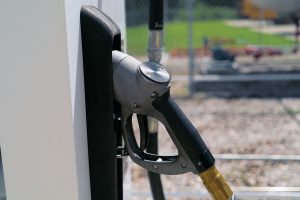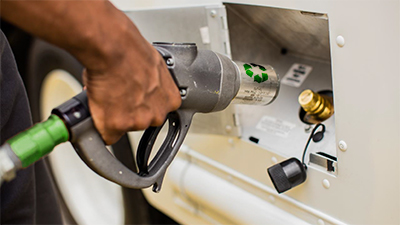Putting Emissions on the Map

We often feel removed from global issues. They’re so big, it’s difficult to imagine our own ability to address them. A new interactive map from the New York Times puts the issue of rising emissions rates that lead to climate warming literally in everyone’s backyard.
When you visit the site, you’ll find statistics on emissions right in your hometown. Spoiler alert: If you live in an American city or suburb, emissions rates around you are most likely climbing — and transportation is at fault.
The Emission Numbers
“Transportation is the largest source of planet-warming greenhouse gases in the United States today,” the Times writes, “and the bulk of those emissions come from driving in our cities and suburbs.”
In the Detroit metro area where I live, total emissions increased 18 percent between 1990 and 2017. Not great but dwarfed by rates in other U.S. locales: Total emissions during the period were up 93 percent in Indianapolis, 96 percent in Charlotte and a whopping 133 percent in Dallas-Fort Worth. Understanding that population shifts drive changes in busy-ness, it doesn’t justify or excuse a lack of counter-planning.
What’s a Fleet to do?
While the study cited shows that 60 percent of emissions come from the nation’s 250 million cars and pick-up trucks, fleets play a role in solving the problem, too. Buses, delivery trucks and other fleet vehicles that run on alternative fuels can significantly cut emissions: In some cases, to zero or near zero. Two alternative fuels — electric and propane autogas — are making the most progress with far-cleaner operation than diesel or gasoline. Electric vehicles have no tailpipe emissions and propane vehicles, when operating on an ultra-low NOx engine, emit near zero.
Roush has invested heavily in both clean fuel technologies. Our advice? Outside of emissions, fleets considering electric and propane should weigh the following:
- Maintenance: Both fuels offer substantial maintenance cost savings.
- Availability: Both fuels offer fleet products today. Commercial truck EVs have complexity of truck configurations but are being worked out. Class 4-7 propane autogas vehicles are available today.
- Support: Manufacturer support is available with both fuels but be sure to fully review the service and warranty support you can expect.
- Fueling. Propane autogas vehicles take minutes to fuel. EVs take hours to recharge.
- Range: Propane autogas fleet vehicles can run upwards of 350 miles on a single fueling. Electric fleet vehicles have a maximum range of 120 miles on a charge.
- Source: According to the U.S. Energy Information Administration, 63 percent of electricity generation comes from fossil fuels, including 27 percent from coal. Renewable sources make up 17 percent. Propane comes from natural gas refining, and to a smaller degree oil refining. Renewable propane, developed from sources like animal fats and vegetable oils, is a very small but growing source.













